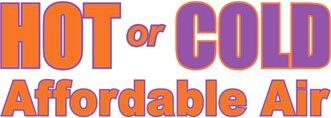Proper maintenance of your air conditioning (AC) system is crucial for ensuring its longevity and optimal performance. As a homeowner, understanding the basics of AC care can help you avoid unexpected breakdowns and costly repairs, especially during the peak summer months when you need your cooling system the most.
Regular maintenance doesn’t just improve the efficiency of your air conditioner; it also enhances indoor air quality and reduces energy consumption. While some tasks can be easily handled by homeowners, others require the expertise of our professionals. Knowing when to call for professional assistance and scheduling regular check-ups can make a significant difference in your AC system’s performance and lifespan.
We’ll explore the essential maintenance tips every homeowner should know. From recognizing the signs your AC needs repair to simple DIY maintenance steps, you’ll gain valuable insights to keep your system running smoothly. Let’s dive into the key aspects of AC maintenance and ensure your home remains comfortable and cool throughout the year.
Understanding the Basics of AC Maintenance
Air conditioning maintenance is crucial for ensuring that your system runs efficiently and lasts for many years. Regular upkeeping involves several basic steps that are easy for homeowners to manage with some consistency. The first step in any maintenance routine is to check and replace the air filters. Dirty filters can obstruct airflow, making your system work harder and less efficiently. Replacing or cleaning filters every month can prevent these issues.
Another critical step in AC maintenance is to keep the outdoor unit clear of debris. Leaves, dirt, and other obstructions can block airflow and reduce the system’s efficiency. Regularly inspect the area around the unit and clear away any accumulated materials. Additionally, it’s important to ensure that the condenser coils are clean. Dirty coils can lead to higher energy bills and increased wear and tear on the system. Cleaning the coils at least once a year can prevent these problems.
Finally, check the system’s refrigerant levels. Low refrigerant can signal a leak or other issues that require professional repair. Our technicians can inspect and fill the refrigerant levels if necessary, ensuring that your system is running optimally. Regular maintenance is not only about avoiding problems but also about ensuring constant, efficient operation.
Top Signs Your AC Needs Repair or Service
Recognizing the signs your air conditioner needs repair or service is essential to prevent more serious issues. Some common symptoms indicate when it’s time to call our professionals for an evaluation and potential repairs.
- Unusual Noises: Strange sounds, such as grinding, squealing, or banging, emanating from your AC unit can indicate mechanical issues. These could be loose parts, failing components, or even debris inside the system. It’s important to address these noises promptly to prevent further damage.
- Inadequate Cooling: If your AC isn’t cooling your home as effectively as before, it could be an indicator of several issues. It might be low refrigerant, blocked vents, or problems with the compressor. Inefficient cooling not only makes your home uncomfortable but also can lead to higher energy bills.
- Frequent Cycles: An AC unit that cycles on and off frequently without maintaining the set temperature is a sign of potential issues. This could be due to a faulty thermostat, low refrigerant levels, or electrical problems within the system.
- High Energy Bills: A sudden spike in your energy bills suggests that your AC is working harder than it should be. This inefficiency might be due to dirty filters, blocked condensers, or other underlying issues that need professional attention.
- Unpleasant Odors: Musty or burning smells coming from the AC vents can indicate mold growth or electrical issues. Mold can affect indoor air quality, while electrical problems pose a fire risk.
By recognizing these signs early, you can schedule timely repairs and avoid more severe complications. Our technicians are equipped to diagnose and fix any issues, restoring your AC’s efficiency and performance. Regular checks and immediate attention to these signs can help maintain a comfortable and safe home environment.
DIY Maintenance Tips to Keep Your AC Running Smoothly
Keeping your air conditioner in top shape involves a few simple DIY maintenance tasks that you can easily handle. These tasks help maintain efficiency and prevent breakdowns, ensuring your home stays comfortable throughout the year.
- Change Air Filters Regularly: One of the simplest yet most effective maintenance tasks is changing the air filter. Dirty filters restrict airflow, making the AC work harder. Replace or clean filters every month to ensure optimal performance.
- Clean the Coils: Over time, the evaporator and condenser coils collect dirt, reducing their efficiency. Cleaning these coils at least once a year can improve your system’s ability to cool your home and extend its lifespan.
- Check the Thermostat Settings: Ensure the thermostat is working correctly and set to the desired temperature. Consider upgrading to a programmable thermostat to enhance energy efficiency.
- Inspect the Condensate Drain: A clogged condensate drain can cause water damage and increased humidity levels. Regularly check the drain line for clogs and clear any blockages to ensure proper drainage.
- Clear Debris Around the Outdoor Unit: Keep the area around the outdoor unit free from leaves, dirt, and other debris. This helps maintain proper airflow and prevents the unit from overheating.
By following these DIY tips, you can keep your AC running smoothly and extend its lifespan. However, remember that some tasks require professional skills, and it’s essential to know when to call our technicians for expert service.
Why Regular Professional Maintenance is Essential for Your AC
While DIY maintenance is crucial, scheduling regular professional maintenance is equally important. Our professionals have the expertise and tools to perform thorough inspections and tune-ups that go beyond what DIY tasks can achieve.
- Detailed Inspections: Our technicians conduct comprehensive inspections of your AC system, identifying potential issues before they become significant problems. This proactive approach helps prevent costly repairs and unexpected breakdowns.
- Enhanced Efficiency: Regular professional maintenance ensures that all components of your AC system are clean and functioning correctly. This optimizes the system’s efficiency, reducing energy consumption and lowering your utility bills.
- Prolonged Lifespan: Professional maintenance helps extend the lifespan of your AC unit. By keeping the system in peak condition, you can avoid premature replacements and enjoy reliable cooling for many years.
- Improved Air Quality: Our technicians clean and inspect the system’s components, ensuring that dust, mold, and allergens do not circulate through your home. This improves indoor air quality and promotes a healthier living environment.
- Safety Checks: Regular maintenance includes checking electrical connections, lubricating moving parts, and ensuring all safety controls are functioning correctly. This minimizes the risk of hazards like electrical fires and refrigerant leaks.
Professional maintenance is an investment in the efficiency, longevity, and safety of your air conditioning system. Trust our experienced technicians to keep your AC system running at its best.
Conclusion
Maintaining your air conditioning system is essential for ensuring comfort, efficiency, and longevity. By understanding the basics of AC maintenance and recognizing the signs that indicate repair or service is needed, you can take proactive steps to keep your system in peak condition. DIY maintenance tasks, such as changing air filters and cleaning coils, are simple yet effective ways to enhance your AC’s performance. However, regular professional maintenance is crucial for comprehensive inspections, increased efficiency, and improved air quality.
At Affordable Air McCallum, we are dedicated to providing top-notch AC maintenance services in Heber Springs, AZ, to help you enjoy a comfortable and energy-efficient home. Contact us today to schedule your professional maintenance service and ensure your air conditioning system operates flawlessly all year round.







 100% Guarantee. If you aren't happy, we will keep coming back until you are.
100% Guarantee. If you aren't happy, we will keep coming back until you are.




